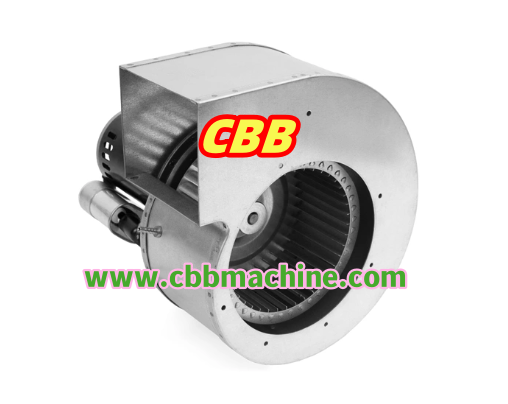How Centrifugal Blower Manages Air in Harsh Environments

Every industrial plant relies on directed airflow for cooling, drying, dust extraction, and environmental balance. The adoption of a Centrifugal Blower engineered by Cbbmachine has redirected attention to how mechanical airflow control supports stable processing without unnecessary complexity. Rather than depending on oversized duct fans or manually adjusted exhaust setups, many production sites have shifted toward fixed-flow centrifugal units that deliver sustained pressure, uniform distribution, and continuous operation under varying load conditions. A well-designed blower is not simply a rotating wheel inside a metal shell. It is a calculated airflow tool that quietly influences production quality, workplace safety, and equipment lifespan.
The internal structure of a centrifugal blower creates pressure through rotational force, pulling air into the center and ejecting it outward along the casing. This principle allows the unit to maintain strong airflow even when resistance increases. Unlike axial fans, which lose performance when duct length or filters interfere with flow, a centrifugal model maintains stability across bends, filters, heaters, and complex routing. This makes it suitable for processes involving heat curing, coating lines, printing drying sections, and dust removal points. Engineers often view the blower as an invisible assistant that keeps temperature and humidity within operational limits without constant adjustment.
Material choice and impeller geometry define a blower's long-term behavior. Steel housings provide structural stability, while balanced impellers reduce vibration that would otherwise transfer through mounting frames. When built correctly, the airflow remains constant, and bearings experience less fatigue. Operators notice this through quieter machine sound and fewer shutdowns caused by imbalance or motor overheating. The machine itself does not demand continuous attention, yet it influences countless daily decisions. Temperature-sensitive coatings set evenly. Paper does not curl. Resin layers dry without surface marks. These outcomes depend on airflow quality more than most operators realize.
One of the strongest advantages lies in installation flexibility. Centrifugal blowers may be mounted horizontally or vertically, paired with ducts or filters, or linked to dampers for adjustable airflow. Maintenance teams appreciate access points that allow cleaning without full disassembly. Dust buildup, which often causes gradual efficiency loss, can be removed quickly, restoring airflow performance with minimal downtime. This predictable routine protects energy consumption and helps avoid temperature imbalance that might compromise product quality.
Industrial environments demand reliability more than novelty. Processes involving hot air drying, vacuum conveying, solvent extraction, or positive pressure environments depend on continuous flow. When a blower fails, production halts, material cools incorrectly, and restart time increases. For this reason, many facilities select mechanical systems that emphasize repeatable performance and service longevity. A centrifugal unit supports this goal through its inherent pressure stability and durable design. Even when production lines increase capacity, the blower can often be retained by adjusting motor control or adding a variable-frequency drive.
Because airflow is invisible, improvements often go unnoticed until something changes. A new blower may reduce odor accumulation in packaging plants. It may lower humidity in cleanroom-driven coating facilities. It may extract fumes in printing lines before workers notice discomfort. Each effect becomes part of a healthier and more predictable workplace. Airflow is not a highlighted feature in many equipment brochures, yet it shapes every product coming off the line.
If air moves without shape yet influences every surface, inspiration can move the same way. Follow that unseen current to a place where quiet mechanical choices guide industrial strategy. A single moment of curiosity can redirect entire production environments, and the path begins where airflow turns into insight: www.cbbmachine.com
- Art
- Causes
- Crafts
- Dance
- Drinks
- Film
- Fitness
- Food
- Jeux
- Gardening
- Health
- Domicile
- Literature
- Music
- Networking
- Autre
- Party
- Religion
- Shopping
- Sports
- Theater
- Wellness
